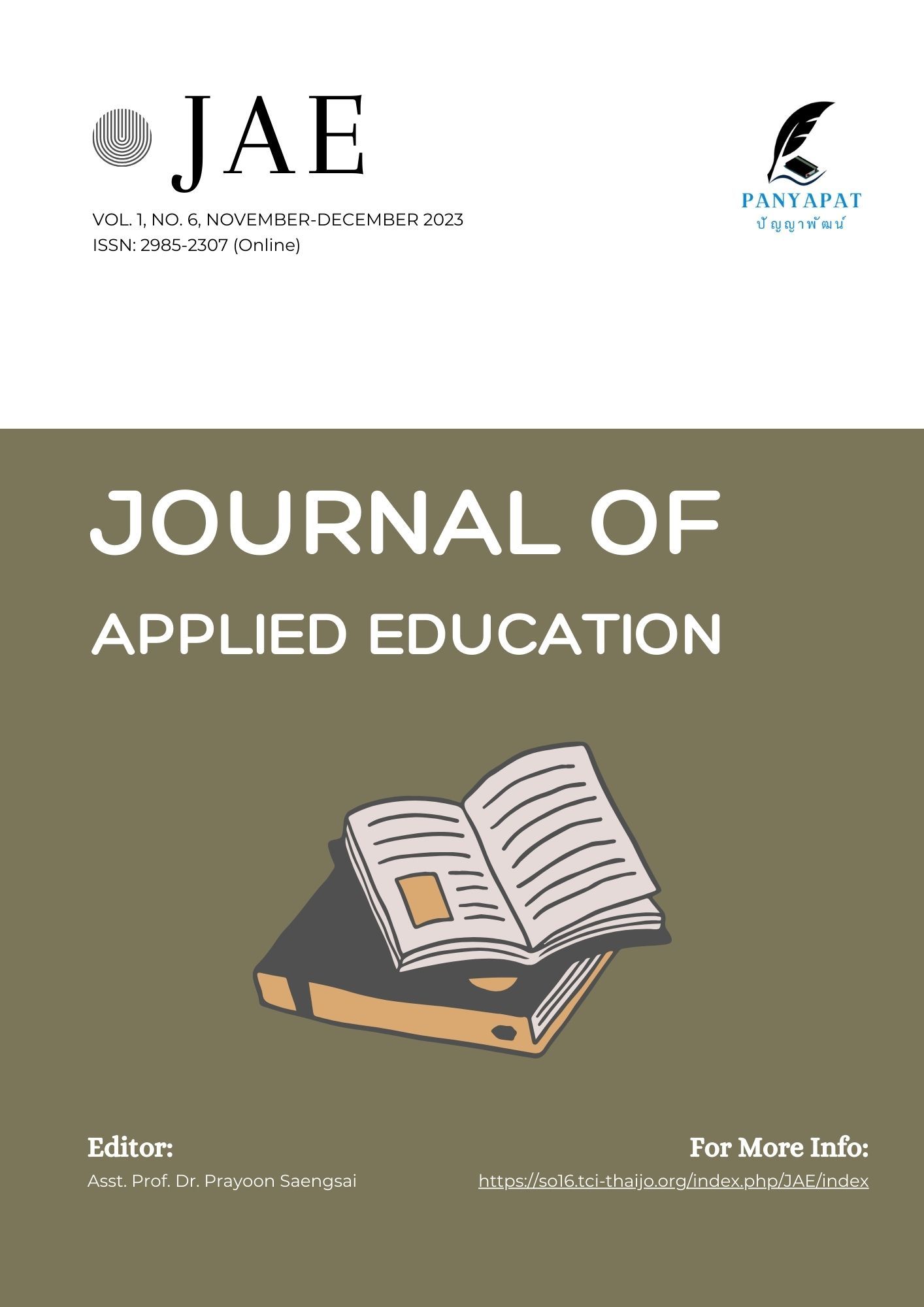Active Learning Teaching to Develop Students into The 21st Century
Main Article Content
Abstract
This article aims to present the teaching of active learning in order to develop students into the 21st century. The results of the study found that active learning teaching, it is a learning arrangement that emphasizes the role and participation of the learner, by adopting a variety of teaching methods and teaching techniques to design learning plans. Encourage students to participate in class, promote interaction between learners and learners and learners and teachers. It is a learning management program that focuses on developing the learning process. Encourage learners to apply skills and connect knowledge to practice to solve problems or pursue a career in the future and it is considered a type of learning management that encourages learners to have characteristics consistent with changes in the present era. Educational challenges in the 21st century: Teachers must therefore be alert and prepared in organizing learning to prepare students with skills for living. Therefore, the role of teachers in the 21st century requires teachers to teach that responds. Learners in the 21st century: Active learning teaching is teaching that aims to reduce the transfer of knowledge from the teacher. It develops skills for students. Emphasis is placed on having students participate in learning as much as possible. and create a learning process through creative communication to develop students into learners who truly learn.
Article Details

This work is licensed under a Creative Commons Attribution-NonCommercial-NoDerivatives 4.0 International License.
References
กมล โพธิเย็น. (2564). Active Learning: การจัดการเรียนรู้ที่ตอบโจทย์การจัดการศึกษาในศตวรรษที่ 21. วารสารศึกษาศาสตร์ มหาวิทยาลัยศิลปากร, 19(1), 11-28.
กลุ่มนิเทศ ติดตามและประเมินผล สํานักงานศึกษาธิการจังหวัดกําแพงเพชร. (2564). แนวทางการจัดการเรียนรู้เชิงรุก (Active Learning) เพื่อพัฒนาทักษะผู้เรียนในศตวรรษที่ 21 จังหวัดกําแพงเพชร. กำแพงเพชร: สํานักงานศึกษาธิการจังหวัดกําแพงเพชร.
คะเณยะ อ่อนนาง. (2561). บทบาทครูในศตวรรษที่ 21 กับการเรียนการสอนแบบ Active Learning. สืบค้น 6 มกราคม 2566. จาก https://citly.me/YZ5kp.
ไชยยศ เรืองสุวรรณ. (2553). Active Learning. เชียงใหม่: คณะเภสัชศาสตร์ มหาวิทยาลัยเชียงใหม่.
นนทลีพร ธาดาวิทย์. (2559). การจัดการเรียนรู้แบบ Active learning. (พิมพ์ครั้งที่ 2).กรุงเทพฯ: ทริปเพิ้ล เอ็ดดูเคชั่น.
วรพจน์ วงศ์กิจรุ่งเรือง และ อธิป จิตฤกษ์. (2556). ทักษะแห่งอนาคตใหม่: การศึกษาเพื่อศตวรรษที่ 21. กรุงเทพฯ: Open Worlds.
วิจารณ์ พานิช. (2555). วิถีสร้างการเรียนรู้เพื่อศิษย์ ในศตวรรษที่ 21. (พิมพ์ครั้งที่ 3). กรุงเทพฯ: มูลนิธิสดศรี-สฤษวงศ์.
สถาพร พฤฑฒิกุล. (2558). เอกสารประกอบการฝึกอบรม “คุณภาพผู้เรียน.......เกิดจากกระบวนการเรียนรู้”. สืบค้น 6 มกราคม 2566. จาก http://www.nitednayok.com/data/Active%20learning.pdf.
สมเกียรติ ตั้งกิจวานิชย์. (2556). การจัดทำยุทธศาสตร์การปฏิรูปการศึกษาขั้นพื้นฐานให้เกิดความรับผิดชอบ. กรุงเทพฯ: สถาบันวิจัยเพื่อการพัฒนาประเทศไทย.
สํานักงานคณะกรรมการการศึกษาขั้นพื้นฐาน กระทรวงศึกษาธิการ. (2562). แนวทางการนิเทศเพื่อพัฒนาและส่งเสริมการจัดการเรียนรู้เชิงรุก. กรุงเทพฯ: หน่วยศึกษานิเทศก์ สํานักงานคณะกรรมการการศึกษาขั้นพื้นฐาน.
สํานักงานเลขาธิการสภาการศึกษา. (2563). การจัดการเรียนรู้ฐานสมรรถนะเชิงรุก. นนทบุรี:บริษัท 21 เซ็นจูรี่ จํากัด.
สิริพร ปาณาวงษ์. (2566). Active Learningเทคนิคการเรียนการสอนในศตวรรษที่ 21. สืบค้น 6 มกราคม 2566. จาก https://apr.nsru.ac.th/Act_learn/myfile/10062014104828_3.pdf.
Bonwell, C. C., & Eison, J. A. (1991). Active learning: Creating excitement in the classroom. 1991 ASHE-ERIC higher education reports. Washington DC: School of Education and Human Development, George Washington University.
Michael L. McKinney. (2008). Effects of urbanization on species richness: A review of plants and animals. New York: Springer Science Business Media.

